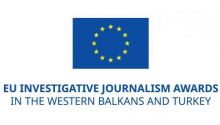Through new models of media funding towards public interest
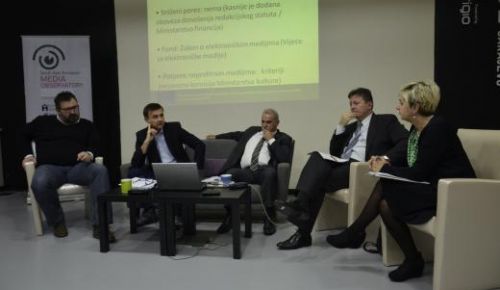
The conclusions of the research of Mediacentar Sarajevo, carried out as part of the SEE Media Observatory project, showed it is highly questionable whether and to what extent does the government funding for media in Bosnia and Herzegovina promote public interest, freedom of expression and media pluralism. Starting from this conclusion, Mediacentar organised roundtable “Who Looks after Public Interest when the Government Finances Media Operations?”, held on 22 November 2016, where the issues related to transparency of these funding patterns and bringing public interest back into financial relations between the public sector and media were discussed.
Namely, considerable funds are allocated through direct financing of media from government budgets, donations, paid contents in media such as promotional campaigns, chronicles, transmissions of sessions and so on, as well as through funding in the context of advertising. However, these issues are insufficiently regulated, as of result of which transparency of data on allocated funds and their spending is limited; independence in decision-making and transparency of allocation procedures are not ensured, with political bodies running the whole process; models and criteria for allocation of funding for media are questionable; and mechanisms for protection of editorial independence of media funded from public budgets are not provided.
Participants in the roundtable highlighted the need for structural and systemic regulation of issues connected to funding of media from the public sector, with some suggestions favoring the passing of a comprehensive media strategy that would address the position and funding of public broadcasting services, public local media, as well as private and non-profit media, and would also define public interest in all funding patterns. At the same time, sources of funding for media should be determined, with some suggesting the RTV tax or income tax and use of funds collected by the Communications Regulatory Agency from license fees in the broadcasting and telecommunications sector. What should also be secured is independence in decision-making, as well as efficient monitoring of spending and evaluation of real effects of these funds on quality of journalism and public interest.
In the first session focusing on transparency of media funding, Mirna Stanković of the Center for Development of Media and Analysis (CRMA) pointed out a number of problems in collection of information on various allocations for media, including lack of budget execution reports on government websites, inconsistent responses to requests for access to information (with a little under 50% requests to which they did not get any response), as well as uneven reporting practices and unclear categories related to allocations for media, which makes it difficult to identify amounts given to media. In collaboration with Mediacentar Sarajevo, Nermina Voloder, researcher at the Center for Social Research Analitika, researched how much public media, on the other hand, are proactive in publishing financial reports and found disturbing results. She told the roundtable that public media for their part do not publish financial reports as a rule (with the exception of the public services RTRS and BHRT) and that even basic information such as the impressum is not always published on media websites.
#BiH Information on media budgets & financing often published in unaccessable formats or not published at all #mediafinancing #transparency pic.twitter.com/olzLcVYP6h
— Media Observatory (@SEEObservatory) November 22, 2016
Mirsada Janjoš, Head of the Audit Office of Institutions in FB&H, pointed out several problems in media funding audit, including limited audit resources, inadequate monitoring of effects of these allocations, and lack of guarantees that auditors’ recommendations will be applied. Among 2,000 institutions which the audit office is in charge of, public media and local governments that fund them are rarely covered in financial audit plans, while information on other forms of media funding is generally unavailable. Nevertheless, it is noticeable, according to Janjoš, that contracts are not always concluded based on public calls for media, but through direct agreements with individual media outlets, while in some cases public procurement procedures are basically evaded without justification through so-called co-production contracts.
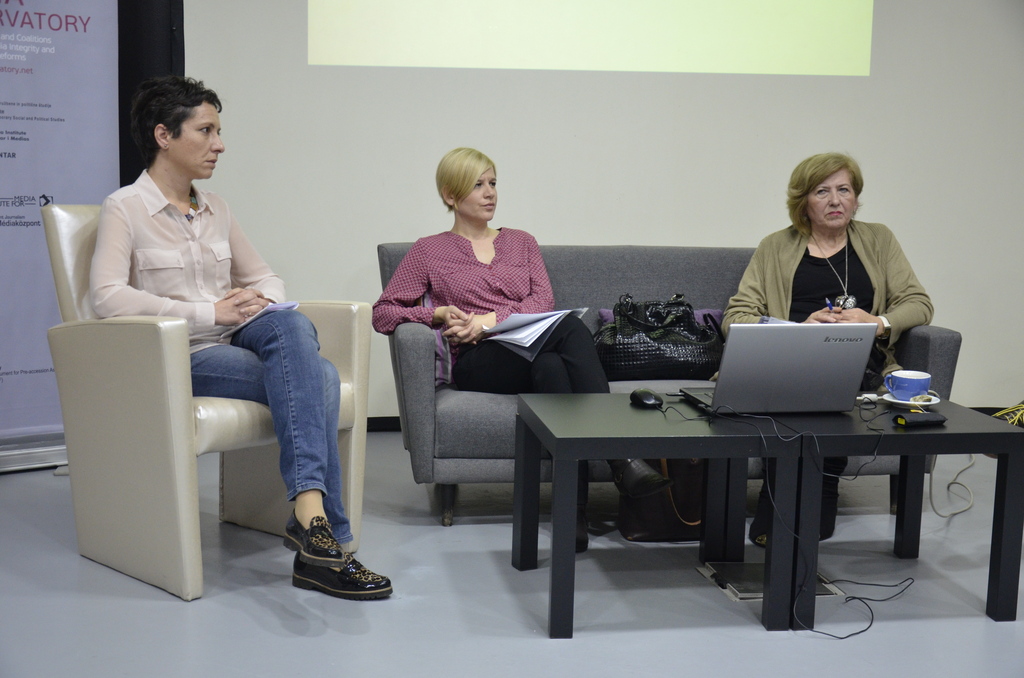
Vladan Joksimović, Deputy Director of the Anti-Corruption Agency of Serbia, talked about funding of media through project applications, which was introduced after the media privatization process was completed in Serbia. The funding was designed as a way to promote public interest and although there have been excellent examples of defined procedures being implemented, numerous flaws and abuses have been noted in practice: a certain number of local government bodies did not publish calls, conflict of interest and/or lack of competence in the composition of decision-making bodies were observed, allocations were not transparent, and media selection criteria were unclear.
In the discussion, representatives of public media pointed out the problem of modest funding of public media and the fact that funding of public media depends on the arbitrariness of incumbent local governments, without any security or protection of editorial independence. Milan Živković, former media advisor at the Ministry of Culture of Croatia, added that the state should ensure basic funding of media and that only in these circumstances can additional funds and project funding of media be used for their intended purpose, i.e. for specific additional, high-quality media contents. That different project funding does not work was demonstrated by experiences from Croatia, where for example a media organization used received funds to cover basic expenses and then falsely reported that it had broadcast programs for which the funds were given but which were actually never produced.
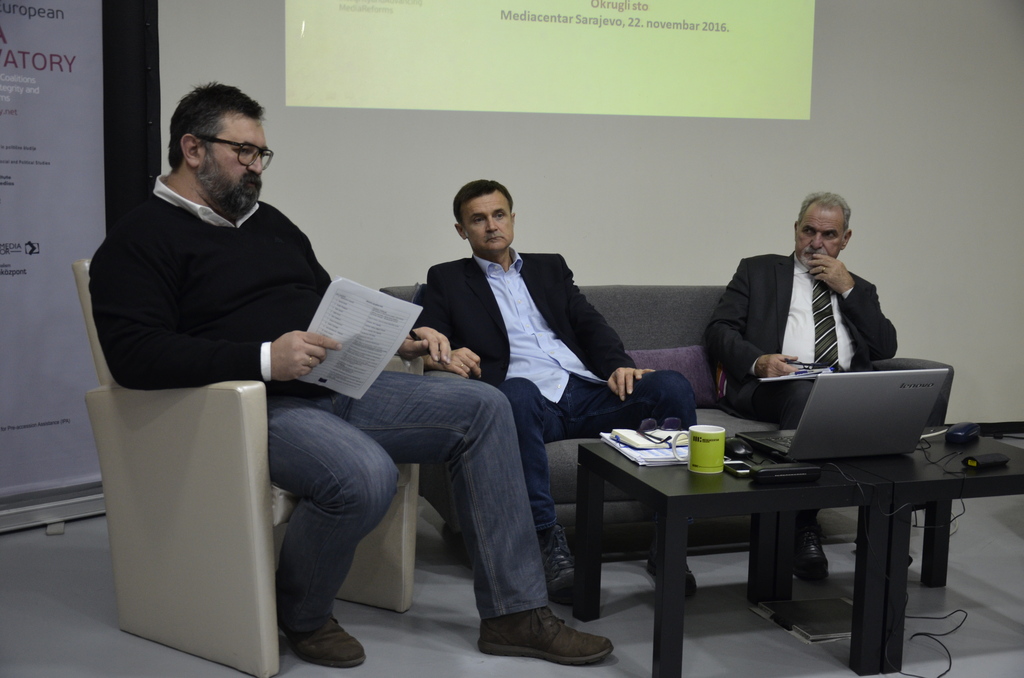
During the second session, which focused on public interest in media funding patterns, Eldin Karić of CRMA talked about the importance of resolving the collection of RTV tax and noted that establishing an efficient system and increasing the collection rate could not only ensure the operation of the three public broadcasting systems, but also eventually resolve the matter of funding other types of media.
Milan Živković presented three models of support to media in Croatia, especially pointing out that direct subsidies for non-profit media, abolished by the previous culture minister, had given exceptionally good results, doubling the number of journalists employed by these media and presumably the quality of media contents. Public interest in this funding model was defined through a liberal-pluralist model, i.e. the sum of particular interests of different groups in Croatia, including, for example, promotion of pluralism and cultural diversity, contribution to education, science, minority rights, environment protection, and many others. Allocation of these funds was decided by a commission whose members were public servants from the Ministry of Culture, the purpose of which was to achieve greater independence of the decision-making process. Effort to achieve transparency was also made by publishing evaluations of project proposals. The Media Pluralism Fund in Croatia, as noted by Živković, also included a definition of public interest but it was unclear what the effects were on the media market, while the reduced Value Added Tax rate actually mostly benefited the financial interests of media companies instead of public interest.
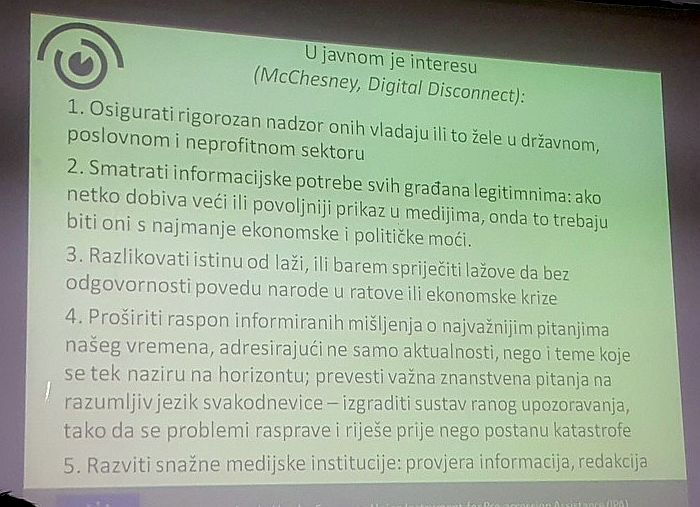
Momčilo Novaković, Chairman of the Transport and Communications Committee of the Parliamentary Assembly of B&H, highlighted the problem of politicization of funding of public services which has not yet been resolved and expressed doubt in the possibility of development of advanced public policies for funding media from the public sector, but recognized the need to launch a debate on better definition of public interest in media in B&H.
Duško Šnjegota of the General Public Sector Audit Service of the Republika Srpska said the Office had drawn attention on several occasions to unclear criteria and lack of reporting on spending of funds allocated to media and also to the need to monitor how the funds are spent. However, due to other priorities and limited resources these issues have not been the subject of systemic audit. Audit of impact could provide in-depth insight into the effects of these allocations and result in essential recommendations for changes in this regard, but at the same time additional mechanisms should be provided so that these recommendations are truly applied in practice.
Zivkovic: "If we can preserve the journalism of our media, then such media will act in public interest" #mediafinancing #publicinterest pic.twitter.com/hLxS8opvr1
— Media Observatory (@SEEObservatory) November 22, 2016
Živković also remarked that a media policy proposal in Croatia had envisioned that an institute for collection of all data on media ownership and funding be established as part of existing institutional capacities, but the final decision has not yet been made. In searching for better solutions, thought should also be given to creating a single, easily accessible database on media ownership and funding in order to increase the sector’s overall transparency and provide better insight into different interests in media organizations. In doing so, submission of requested data on ownership and sources of funding could be a precondition for media to even be financed from public funds and budgets.
This event is part of Mediacentar’s advocacy activities in the SEE Media Observatory project. Mediacentar also published and distributed at the event a policy document with an analysis of the discussed issues and the offered guidelines for policy development in this field.


